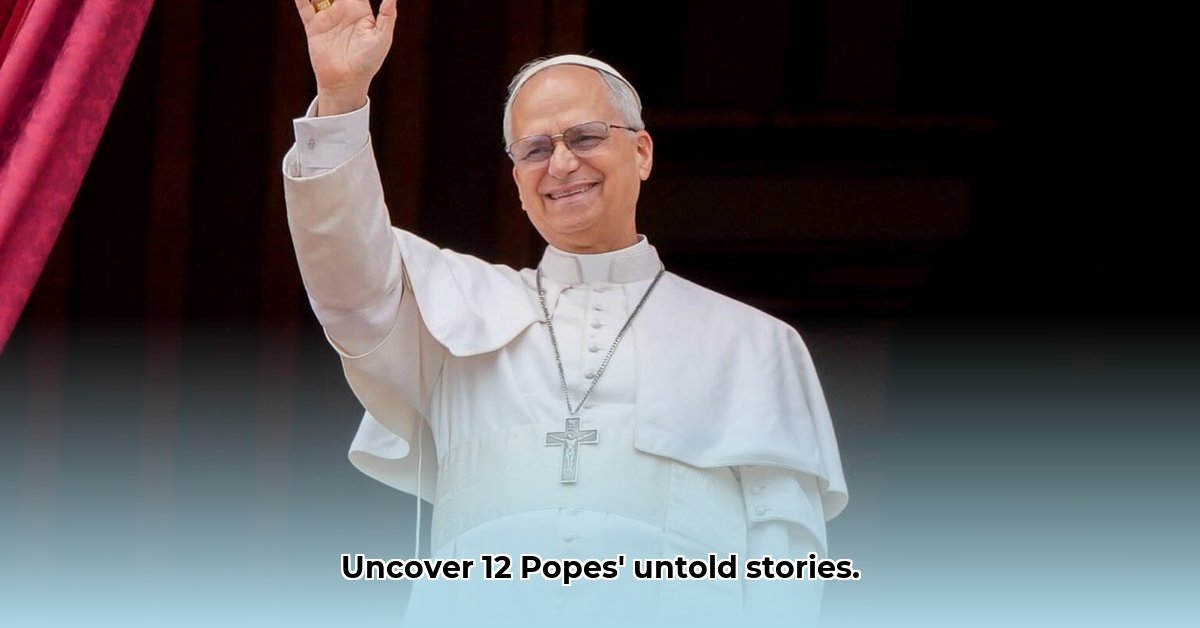
A lekker journey through time, exploring twelve Popes who shaped the Catholic Church.
This isn't just a list, it's a story – a story of power, faith, and the changing face of the Church. Grab a koppie of koffie and let's begin! For a deeper dive into Catholic symbolism, check out this helpful resource: Catholic symbolism.
Leo I (440-461): The Defender of the Faith
Leo I, often called "The Great," reigned during the crumbling of the Western Roman Empire. Yet, he solidified the Pope's influence, particularly at the Council of Chalcedon (451 AD), a pivotal meeting defining key Christian beliefs. He boldly defended orthodox doctrine against heresy, demonstrating the enduring power of papal authority even amidst imperial decline. His actions shaped the theological landscape of the Church for centuries to come. Did his strong stance against heresy stem from a genuine theological conviction or a shrewd political manoeuvre to maintain Church unity amid turmoil? He certainly ensured the Papacy remained a force to be reckoned with.
Gregory I (590-604): The Administrator
Nicknamed "the Great," Gregory I inherited a Church facing chaos. The Roman Empire was weakening. He revitalized the papacy through efficient administration, missionary work (including sending Augustine to England), and extensive charitable acts. His organisational skills and reformist zeal reshaped the Church's structure and administrative practices, setting precedents that would persist for centuries. His focus on social welfare, though driven by necessity, showcased the papacy's ability to navigate challenging circumstances. This is a testament to skillful governance even during widespread social and political unrest.
Gregory VII (1073-1085): The Reformer
Gregory VII is synonymous with the Investiture Controversy, a clash with Emperor Henry IV over the appointment of bishops. This dispute, a power struggle of epic proportions, highlighted the growing tension between secular and religious authority in medieval Europe. [1] Gregory's assertion of papal supremacy redefined the relationship between Church and state and fundamentally altered the political landscape of Europe. He redefined papal power and established a precedent for centuries of ongoing conflict over control.
Innocent III (1198-1216): The Supreme Pontiff
Innocent III epitomized papal power at its zenith. He wielded considerable influence over European politics, intervening in disputes, launching crusades (including the disastrous Fourth Crusade), and even deposing rulers. He championed Church authority, demonstrating the political influence of the papacy. However, this period also illustrated the potential dangers of such immense power and its inherent capacity for misuse. His actions demonstrate the significant impact a papacy's actions can have on shaping the historical course of events.
Boniface VIII (1294-1303): The Defender of Papal Authority
Boniface VIII's reign showcased the changing dynamics between the papacy and rising nation-states. His conflict with King Philip IV of France over taxation demonstrated the limits of papal authority in the face of growing monarchical power. His ambitious attempts to maintain supreme power ultimately backfired, revealing the shifting balance of power in 14th-century Europe. His clash provides a compelling study of the clash between long held religious authority and the growing nationalism in Europe.
Gregory XI (1370-1378): The End of Avignon
Gregory XI's return of the papacy from Avignon to Rome marked a significant turning point after the prolonged Avignon papacy. This relocation symbolised a move toward greater independence from French influence and a step toward resolving the Western Schism. This seemingly simple act had far-reaching consequences for Church unity and political relations between the papacy and the major continental powers.
Martin V (1417-1431): Ending the Schism
Martin V's election ended the Western Schism, a period of competing papal claims that had profoundly divided the Church. His papacy was devoted to healing the wounds of the schism. He managed to heal the division and restore a sense of unity to the Catholic Church. His leadership demonstrated the importance of reconciliation and effective leadership within the Catholic Church.
Leo X (1513-1521): The Renaissance Pope
Leo X's papacy was characterised by its engagement with the Renaissance. His patronage of the arts and extravagant lifestyle, though reflecting the cultural trends of the era, underscored a disconnect between the Church's wealth and the concerns of a growing number of its people. Some argue his policies unwittingly fuelled the Protestant Reformation. His approach reflected the changing ideals in Europe and consequently had a crucial impact on the Church and it's future.
Paul III (1534-1549): The Counter-Reformation Pope
Paul III met the challenge of the Protestant Reformation by initiating the Council of Trent, a landmark event that reformed Catholic doctrine and practice. This council redefined how the Church operated and showed his commitment to reforming the Catholic Church in direct response to the Protestant Reformation.
Pius IX (1846-1878): The Longest Reign
Pius IX's extraordinarily long papacy witnessed dramatic changes, including revolutions, the rise of nationalism, and the loss of Papal States. His pronouncements, such as the declaration of the Immaculate Conception, reflect a conservative response to the challenges of modernity. His papacy reflects the difficulties faced by the Church in responding to 19th-century challenges. This was a time of vast change and unrest.
John XXIII (1958-1963): The Council Pope
Elected at an advanced age, John XXIII surprisingly convened the Second Vatican Council (Vatican II), a landmark event that modernized the Catholic Church and fostered greater openness to the world. His progressive vision transformed the Catholic Church opening the way for many changes.
John Paul II (1978-2005): The Global Pope
John Paul II's global reach and influence transcended religious boundaries. His extensive travels, outspoken stance against oppression, and personal charisma made him a global icon. His massive appeal highlighted the continuing capacity for religious influence, even in the modern era, and showcased a global reach.
These twelve Popes offer a fascinating glimpse into the ebbs and flows of the papacy, demonstrating how faith and power continually interacted, shaped by the wider socio-political currents of their times. Their stories, far from being isolated events, are interwoven threads that reveal a complex and ever-evolving institution.